This online training course was held November 19, 2020.
The reliability and significance of results in testing for the presence or absence of food- and water-borne microbial contaminants is dependent not only on the performance and sensitivity of the test method itself, but also on the sampling practices employed. Sampling practices influence the validity and usefulness of all results that stem from any subsequent testing.
Sampling considerations can be divided into three distinct areas that encompass (i) field-derived samples, (ii) samples derived from manufacturing and processing sites, and (iii) those within the testing laboratory itself. In all three of these scenarios, the goal is to efficiently and confidently capture a sample that best represents the whole.
This training course will introduce theoretical considerations for the reliable collection of test samples and the practical applications for testing water, soil amendments, fresh produce, and grains for several highly pathogenic microbial contaminants.
Information gained from participation in this training session will provide industry and associated food-safety testing stakeholder communities with important information on how to design effective sampling plans; and how to employ the most relevant methodologies aligned with regulatory practices for obtaining reliable data needed to assess the safety of their products. It is also intended to assist accredited laboratories as they develop sampling plans in compliance with ISO 17025.
All times are in EST. View speaker biographies
| 9:00 AM– 9:15 AM | Welcome and Introduction, P. Orlandi, AOAC INTERNATIONAL |
| SESSION 1: FIELD SAMPLING | Part 1: Water Sampling for Enteric Pathogens: |
| 9:15 AM – 9:40AM | Dead-end Ultrafiltration (DEUF) for Detection of Shigatoxigenic E. coli in Agricultural Water, J. Kase, FDA |
| 9:40 AM – 10:15AM | DEUF for Detection of Cyclospora from Water, A. DaSilva and M. Durigan |
| 10:15AM – 10:40 AM | Modified Moore Swab Water Sampling for Salmonella in Agricultural Waters R. Bell, FDA |
| Part 2: Sampling of Other Environmental Matrices of Importance | |
| 10:40 AM – 11:05AM | Sampling of Compost and other Soil Amendments, D. Ingram, FDA |
| Part 3: Sampling Field Produce and Grains for Enteric Pathogens | |
| 11:05 AM – 11:30 AM | Listeria monocytogenes Sampling and Analysis in Produce Processing Environments and Natural Environments, Yi Chen, FDA |
| 11:30 AM – 11:55AM | Perspectives on the Sampling of Grain and Grain Products, Sam Myoda, IEH Laboratories & Consulting |
| 11:55 AM – 12:15 PM | Question and Answer Period for the Field Sampling Speakers |
| 12:15 PM – 1:30 PM | Lunchtime Break |
| SESSION 2: SAMPLING IN MANUFACTURING SITES | |
| 1:30 PM – 1:55 PM | Sampling from Large Quantities of Raw Ingredients, G. Sharma, FDA |
| 1:55 PM– 2:20 PM | The Environmental Monitoring Zone Concept and Swabbing, D. Zink, IEH Laboratories & Consulting |
| 2:20 PM – 2:40 PM | Question and Answer Period for the Speakers |
| SESSION 3: LABORATORY ANALYSIS OF ENVIRONMENTAL SAMPLES | |
| 2:40 PM – 3:05 PM | Methods Validation for Non-culturable Organisms, T. Hammack, FDA |
| 3:05 PM – 3:30 PM | Concentration Techniques: The Role of Immunomagnetic Capture, J. Kase, FDA |
| 3:30 PM – 3:50 PM | Question and Answer Period for the speakers |
| SESSION 4: STATISTICAL CONSIDERATIONS | |
| 3:50 PM – 4:20 PM | Developing a Sampling Plan and Addressing Measurement Uncertainty, B. Buchanan, University of Maryland |
| 4:20 PM – 4:30 PM | Question and Answer Period |
| 4:30 PM – 4:40 PM | Closing Comments and Adjournment |
The audio and video content in this training course is intended only for course registrants, and may not be recorded or reused for other purposes.
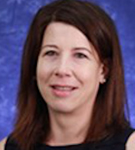
TOPIC: Dr. Kase will provide details on sampling large volumes of agricultural water for the ultimate detection of Shigatoxigenic E. coli (STEC). Attendees will hear how dead-end ultrafiltration has been adapted for this purpose and efforts to evaluate recovery of STEC as part of a validation study. Applications to current and past FDA investigations will also be covered. Dr. Kase will also focus on the use of immunomagnetic separation (IMS) to separate and concentrate E. coli O157:H7 from complex environmental matrices like soil, compost, and animal scat. At the end of the presentation, attendees should understand the benefits of using O157 IMS and how it can fit into the larger culture-based lab flow. Several optional steps will be discussed that can improve the likelihood of target recovery.
Dr. Julie Ann Kase is a research microbiologist in the Microbial Methods Development Branch within the Division of Microbiology at FDA’s Center for Food Safety and Applied Nutrition. Dr. Kase joined FDA in 2008 and quickly established herself as an agency subject matter expert for Shiga toxin-producing E. coli (STEC) and Brucella spp. She has spent over 25 years at the lab bench encompassing work as a pharmaceutical chemist, public health scientist, and food microbiologist and has authored dozens of peer-reviewed publications and book chapters. Her research activities have touched upon the transmission and detection of infectious agents in the environment, the microbiocidal efficacy of chemical disinfectants, and methods to culture and identify pathogenic STEC and Brucella spp. from various matrices. Much of her current work involves leading longitudinal studies surveying the produce growing environment for foodborne pathogens in various locations across the US. Dr. Kase has served on numerous committees including the National Advisory Committee on Microbiological Criteria for Foods (NACMCF), the FDA Bacteriological Analytical Manual (BAM) Council, the ILSI North America Committee on Food Microbiology, and currently serves as Chair of the FDA STEC Advisory Council.
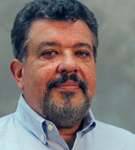
TOPIC: Dr. da Silva and Dr. Durigan will discuss methods development for detection of parasites in environmental samples; and development of a validation study for detection of C. cayetanensis in agricultural water.
Dr. Alex da Silva serves as the Senior Biomedical Research Service – Research Microbiologist –Lead Parasitologist at FDA’s Center for Food Safety and Applied Nutrition (CFSAN), Office of Applied Research and Safety Assessment (OARSA). Dr. da Silva initiated his career at the Centers for Disease Control and Prevention (CDC) as a Junior Parasitologists in 1992. At CDC Dr. da Silva built a parasitology diagnostic program based on molecular methods and telediagnosis. Through this program, also known as DPDx, a robust network for diagnostic response in parasitic diseases was built at health departments in the US states and territories. At CDC Dr. da Silva also initiated the genomics program on Cyclospora cayetanensis with funds from the Advanced Molecular Detection initiative. This program was funded at $500,000/year for 5 years.
During his career at the federal public health agencies, Dr. da Silva developed several molecular methods for diagnosis of parasitic diseases caused by Microsporidia, Plasmodium (etiologic agent of malaria), Leishmania, the life-threating free-living ameba Naegleria fowleri, Trypanosoma cruzi, Cryptosporidium, Angiostrongylus cantonensis and Cyclospora cayetanensis. These methods were implemented in many laboratories worldwide and improved significantly the reference diagnosis of these selected parasitic diseases. Due to his extensive expertise in laboratory diagnosis, Dr. da Silva provided essential laboratory diagnostic response to investigations of parasitic diseases outbreaks such as toxoplasmosis, cryptosporidiosis, Sarcocystis infection, free-living ameba infections, eosinophilic meningitis, and cyclosporiasis.
In September of 2014, Dr. da Silva joined the U.S. Food and Drug Administration (FDA) to build and lead a program focused on foodborne parasitology at OARSA/CFSAN. The most recent achievements of this parasitology program were the development and validation of two independent methods for the detection of C. cayetanensis in produce and in agricultural water, and the implementation of these methods in the laboratories of the FDA’s Office or Regulatory Affairs. This is closing significant gaps that were hampering the FDA’s mission in produce safety related to foodborne parasitology. Dr. da Silva has authored/co-authored more than 120 publications and several book chapters in advanced detection of parasites and outbreak investigations of parasitic diseases. Dr. da Silva is a member of the editorial boards of the Journal of Food Protection, Journal of Clinical Microbiology and Applied and Environmental Microbiology.
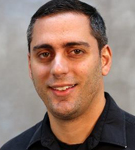
Dr. Mauricio Durigan joined FDA/CFSAN in 2016 as a Visiting Scientist with the Division of Virulence Assessment (DVA) in the Office of Applied Research and Safety Assessment (OARSA). Dr. Durigan has over 12 years of experience in Molecular Diagnostics and Epidemiology of Parasitic Diseases. Since Dr. Durigan joined FDA, he has been working with the development of streamlined methods to detect C. cayetanensis and the validation of regulatory methods for molecular epidemiology tools. The major project aims the validation of a sensitive method to detect C. Cayetanensis in environmental sources like water matrices. This is a very challenging study that represents major food safety and regulatory issues that should be addressed by the agency. His specialties include Genetics and Molecular Biology, Next-Generation Sequencing, Foodborne Parasitology, Molecular Parasitology, Epidemiology of Parasitic diseases, and Environmental Microbiology.
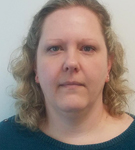
TOPIC: The Moore Swab was first introduced in 1948 for the isolation of Salmonella from water. A modification to this technique by Bisha et al (2011)*, the modified Moore swab (mMS) will be discussed today as a way to sample larger volumes of water for the presence of Salmonella. Successes and challenges of the method will be addressed. In addition, some adaptations to the FDA-BAM method for the detection of Salmonella from foods that allow for successful isolation of Salmonella from complex environmental samples such as water and sediment will be discussed.
Dr. Rebecca Bell is a Research Microbiologist in the Molecular Methods and Subtyping Branch within the Division of Microbiology at the Food and Drug Administration Center for Food Safety and Applied Nutrition. Dr. Bell received her Ph.D. in microbiology from The Ohio State University in 2005. Afterwards, she joined CFSAN in 2006 as a postdoctoral fellow in the Division of Analytical Chemistry where she worked on bacterial protein profiling using liquid chromatography/mass spectrometry. In 2008, Dr. Bell moved to MMSB. She is currently a lead microbiologist with the Human Pathogens on Plants (HPOP) research group focusing on the ecological surveillance for Salmonella in agricultural areas of the United States, understanding Salmonella fitness in the pre-harvest environment and developing strategies to prevent or mitigate contamination of fresh produce. Dr. Bell serves as a subject matter expert on Salmonella biology and environmental ecology for CFSAN.
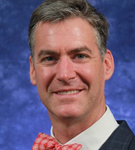
TOPIC: Dr. Ingram will discuss FDA’s Regulatory approach for the safe usage of compost and other soil amendments, as promulgated by the Produce Safety Rule (21 CFR part 112); and Investigational sampling techniques pertaining to compost and other soil amendments.
Dr. Dave Ingram joined FDA/CFSAN in 2013 as a Consumer Safety Officer with the Division of Produce Safety in the Office of Food Safety. Previous experience includes over 14 years of service as a Food Safety Microbiologist with the U.S. Department of Agriculture-Agricultural Research Service (USDA-ARS) in Beltsville, Maryland, where he integrated his experiences in clinical, food and environmental microbiology to further research in critical pre- and post- harvest food safety issues. Pre-harvest areas of interest include the potential for human pathogens to contaminate produce, especially leafy greens, as well as understanding how irrigation water quality management and the application of various standards for treating and handling soil-amendments may help to reduce the prevalence and persistence of on-farm foodborne pathogens. Dr. Ingram has investigated how virulence factor regulation and expression may influence the growth and persistence of foodborne pathogens in farm environments, as well as during postharvest processing and packaging of lettuce and other leafy greens. Dr. Ingram’s research has been instrumental in the development of the United States Composting Council (USCC) testing standards for human pathogens in compost and his work on the fate of human microbial pathogens during the production of compost and agricultural teas was used to develop compost tea Good Agricultural Practices (GAPS) adopted by the National Organics Standards Board (NOSB). Dr. Ingram is pleased with his transition to the FDA, where he serves in many capacities in continuance of his commitment to promote public health by enhancing the safety of our nation’s food supply – mainly through the development of feasible, science-based regulations designed to reduce the incidence of foodborne illness associated with produce. He received his B.S. in Biology from Dickinson College, and both M.S. (Microbiology) and Ph.D. (Food Science) degrees from the University of Maryland at College Park.
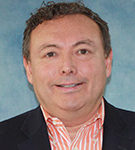
Dr. Samuel P. Myoda is the Executive Vice President of IEH Laboratories & Consulting Group. Dr. Myoda has held a variety of positions at IEH, including COO and CEO of the Produce and Environmental Divisions since joining the company in June of 2007. Dr. Myoda is an expert in forensic microbiology, epidemiological and root cause analysis, genetic fingerprinting, food safety, process verification and validation and environmental monitoring. Dr. Myoda’s recent focus is the evaluation, development, advancement and incorporation of new technologies such as Next Generation, Whole Genome Sequencing (WGS) and Metagenomics in the food industry to produce the safest foods possible. Dr. Myoda is also involved in many other aspects of the company’s operations which include but are not limited to engineering, routine indicator organism and pathogen detection, customer support, research and development, accreditations, quality, comprehensive risk assessment and program design. Dr. Myoda routinely interacts with the USDA, FDA, CDC, DAFF and Health Canada on a plethora of issues including baseline surveys, regulatory & compliance issues, method development, DWPE, epidemiological issues, etc.
Prior to joining IEH, Dr. Myoda was employed by the State of Delaware, Department of Natural Resources and Environmental Control (DNREC), Division of Water Resources where he was the 2006 Employee of the Year. His responsibilities at DNREC included but were not limited to creator and Director of the Molecular Biology Laboratory, research, method development, computer modeling (water quality, hydrodynamic, etc.), risk assessments, water and wastewater treatment, environmental monitoring, and regulatory and compliance issues (TMDLs, water quality standards, permits (CSO, NPDES,CAFO, MS4, etc.).
Dr. Myoda has a wide-ranging knowledge of federal and state laws, rules, regulations, and policies, e.g. Clean Water Act, Clean Air Act, RCRA, Beach Act and SARA. Dr. Myoda is considered to be a leading expert in the fields of microbial source tracking (MST) and water quality and was invited and served as an expert at the US EPA Experts Scientific Workshop on Critical Research Needs for the Development of New or Revised Recreational Water Quality Criteria (2007). Dr. Myoda has served as a consulting and testifying expert in a variety of cases including the September 2006 spinach E. coli O157 outbreak and Tyson et al. v. Oklahoma (2007). In addition to his expertise in the environmental field, Dr. Myoda has a great deal of experience in disinfection, process controls, program management, computer programming and design.
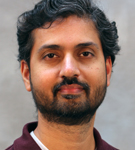
TOPIC: Developing an appropriate sampling plan is vital to optimize sampling errors and associated risks. The risk of lot mis-classification include accepting a non-compliant lot (consumer’s risk) and rejecting a compliant lot (producer’s risk). This session will discuss sampling associated errors resulting from sampling, sample preparation and analytical method, and identify factors that can help minimize them. Further, using gluten as an example analyte, various sampling plans will be evaluated using operating characteristic (OC) curves and the effect of sampling parameters on OC curves to reduce the risks to a desired level will be discussed.
Dr. Girdhari Sharma received his Ph.D. in Food and Nutrition from Florida State University. He is currently a Staff Fellow in the Immunobiology Branch, Division of Virulence Mechanisms, in the Office of Applied Research and Safety Assessment, Center for Food Safety and Applied Nutrition, at the Food and Drug Administration. Dr. Sharma has over a decade of experience in the development and validation of immunoassays for food allergens and gluten detection. Dr. Sharma’s current work includes optimizing sampling plans by studying food allergens and gluten distribution in a sample and sampling associated errors in efforts to make informed decisions. In addition, Dr. Sharma’s research has also investigated the impact of food processing on allergen and gluten quantitation, and efforts to minimize their cross-contact in foods.
Dr. Sharma has co-authored 25 research articles in peer reviewed journals and his work has been presented at several national and international meetings. He is an Associate Editor for the Journal of Food Science and serves on the AOAC Expert Review Panel for gluten detection methods.
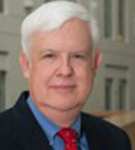
TOPIC: An environmental pathogen sampling program must be designed to detect environmental pathogens before they become established in a facility and cause product contamination. This is best done by defining environmental sampling “zones” based on the proximity to exposed product and the risk of contamination. Sampling must take into consideration the presence of likely harborage areas as well the potential for pathogens to move throughout a facility via traffic areas. Environmental sampling zones should not be confused with the hygienic zones that define high, moderate and low hygiene areas in the facility.
Dr. Donald L. Zink received a Bachelor of Science from Abilene Christian University (1974). He earned an M.S. degree in Microbiology (1976) and a Ph.D. in Biochemistry and Biophysics (1978) from Texas A&M University. Over a period of 5 years, Dr. Zink held faculty positions at Texas A&M University’s College of Veterinary Medicine and at the University of Arizona in the Department of Microbiology and the Department of Food Science. He worked in the food industry for 19 years and held various food safety and quality assurance position with Campbell Soup Company, Nestlé, and Future Beef Operations. In 2002, he joined the U.S. Food & Drug Administration’s Center for Food Safety and Applied Nutrition (CFSAN) where he served as a Senior Food Scientist in the Office of Food Safety. In 2009 he became the Senior Science Advisor for CFSAN in the Office of the Center Director. In 2015, Dr. Zink retired from the FDA and took a position as President of the Division of Foods & Regulatory Compliance of IEH Laboratories & Consulting Group. Dr. Zink has authored 33 peer-reviewed publications and his research interests have centered on food borne bacterial pathogens, particularly Yersinia, Salmonella, Brucella, and Clostridium botulinum.
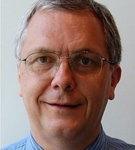
TOPIC: This presentation covers validation requirements for non-culturable organisms.
Mr. Hammack is a Senior Policy Analyst for Microbiology in CFSAN. He served as the Chief of the Microbial Methods Development Branch of CFSAN’s Division of Microbiology from 2009 to 2019, where he led a team of 25 microbiologists in the development of methods for the detection and characterization of bacterial pathogens and toxins in foods and on environmental surfaces. He is also a co-author of FDA’s Bacteriological Analytical Manual’s (BAM) Salmonella, Cronobacter, and Food Sampling and Preparation of Sample Homogenate chapters. Mr. Hammack currently Chairs the FDA’s Microbiology Methods Validation Subcommittee (MMVS) and is a member (past Chair) of the Bacteriological Analytical Manual Council. He is an Expert Review Panel member for AOAC International where he has overseen the validation of numerous microbiological methods for bacterial pathogens, such as Salmonella, Listeria, and E. coli O157:H7. Finally, he has served as Chair of the US Technical Advisory Group to ISO TC 34/SC 9 since 2011. ISO TC 34/ SC9 is the committee from which all ISO food microbiological methods arise. He received his BS (Food Science) and MS (Poultry Science) degrees from the University of Maryland at College Park.
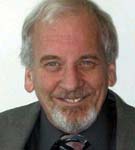
TOPIC: This presentation will focus on identifying the key factors that affect the effectiveness, utility, and cost of conducting microbiological testing all along the food chain. Topics included will be difference between chemical and microbiological testing, impact of lower limits of detection, concepts related to defect rates, sampling methods, and assessing characteristics of sampling plans. This will also include consideration of use of expert knowledge in developing sampling methods and assessment of residual risk when designing microbiological sampling programs for food safety systems verification.
Dr. Buchanan is a retired Professor of Food Safety in the University of Maryland Department of Nutrition and Food Science and was the first Director of the University’s Center for Food Safety and Security Systems. He received his B.S, M.S. M.Phil, and Ph.D. degrees in Food Science from Rutgers University, and post-doctoral training in mycotoxicology at the University of Georgia. Since then he has had almost 50 years of experience teaching, conducting research in food safety, and working at the interface between science and public health policy, first in academia, then in government service in both USDA and FDA, and most recently at the University of Maryland. His scientific interests are diverse, and include extensive experience in predictive microbiology, quantitative microbial risk assessment, microbial physiology, mycotoxicology, and food safety systems. He has published extensively on a wide range of subjects related to food safety, and is one of the co-developers of the widely used USDA Pathogen Modeling Program. Dr. Buchanan has served on numerous national and international advisory bodies including having served for 21 years as a member of the International Commission on Microbiological Specification for Foods, as a six-term member of the National Advisory Committee for Microbiological Criteria for Foods, as the U.S. Delegate to the Codex Alimentarius Committee on Food Hygiene for a decade.